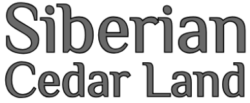Heal-All
(Prunella Vulgaris L.)
Health Benefits. Uses. Preparation. Safety.

- Chris McClure
- January 15, 2023
- No Comments
- Edited by Milla Ezman
Common Names:
Self-heal, Heal-all, Blue Curls, Heart-of-the-Earth, Brunella Carpenter-weed.
Botanical Name:
Prunella vulgaris L.
Parts used:
Aireal parts of the herb.
Taste:
Slightly bitter, earthy and minty. Well pleasent taste.
Uses:
Topicaly – bruises, sprains, wounds, sores, and sore throat. Internaly as a tea, infusion or tincture – poor vision, blood stasis, edema, infection, mammary gland hyperplasia, hypertension, and tumors.
Key actions:
Antioxidant, antiscrofulous, astringent, styptic.
Constituents: Betulinic-acid, D-camphor, delphinidin, hyperoside, manganese, oleanolic-acid, rutun, ursolic-acid, and tannins.
Heal All (Prunella vulgaris) – this herb’s benefits were mysterious for a time, while medicinal studies indicate that the legends may truly support the scientific evidence. Just as it is named, the “Self-Heal herb” is applied externally as a healing herb in minor ailments, such as bruises, sprains, cuts, mouth sores (ulcer, mouth wash), dry eyes (used as an eye wash). As a well‑known Chinese folk medicinal herb with properties of heat and detoxification, Prunella is traditionally used to treat poor vision, blood stasis, edema, infection, mammary gland hyperplasia, hypertension, and tumors. Extensive studies have been done in the research of Prunella and scientists have found that Prunella has anti-viral properties, history of lowering blood sugar, decreasing blood pressure,anti-cancerproperties
History and Folklore
Native to most temperate climates, it was introduced to a slough of countries around the 1800s and became outright invasive in the Pacific Islands, such as Australia, Hawaii, and New Zealand. It is also abundant in Ireland. The Blackfoot Indians used heal-all in many ways on man and on horse. Many other Native American tribes made heavy use of the herb, mainly for bruises, sores, or other dermatological injuries, such as cuts.
John Gerard, a 16th-century herbalist, wrote that “there is not a better wounde herbe in the world.” Nicholas Culpeper, a 17th-century botanist, also wrote that the herb was given the name self-heal because “when you are hurt, you may heal yourself.”
Growing:
The herb is a semi-evergreen perennial, which means that it will last longer into the dry/cold months than most, and it will return year after year with little to no work.
Be warned, however, that because it is part of the mint family, it can quickly become invasive. This means that you should plant it where you can control its spread.
Prunella Vulgaris requires cool to mild temperatures and sun or partial shade. They may be planted in spring, between 4 to 6 inches, or 10 to 15 centimeters deep. They should be spaced between 6 to 9 inches, or 15 to 23 centimeters.
Harvest: Cut the plant just above the surface of the ground in order to leave the roots for future growth. This should be done during the mature flowering stage (June to September) for maximum potency.
Preparation:
Tincture:
Chop fresh leaves and flowers of the herb finely. Combine 1 part of the herb with 2 parts of high-proof vodka. Cap, label, and allow it to infuse for 4 to 6 weeks. Shake from time to time. After the 4 to 6 weeks, transfer the tincture to a container of your choice, preferably a bottle with a dropper, and label.
Herbal tea:
First, dry the individual parts of the plant. To make the tea, place 2 to 3 teaspoons of the dried herb in a mug, then pour 8 ounces of boiled water. Cover the mug and steep for 45 minutes to an hour. Optionally, you can sweeten it with honey.
Salve
First, dry the individual parts of the plant. To make the salve, take roughly 1/3 cup of the dried herb and combine it with 3/4 cup of olive or sunflower oil in a jar. Leave the jar open and place it inside a saucepan with a few inches of water. Set it to medium-low heat for 2 to 3 hours. You can also cap the jar once you have combined the herbs and the oil and allow it to infuse for 4 to 6 weeks. Shake from time to time. After the oil has been infused with the herb, combine 1/2 cup of the infusion with a tablespoon of beeswax pastilles. Melt them together in a heat-resistant jar. Pour into a container of your choice and allow it to cool before capping it. Label.
Children Dosage:
- 6 months old to 3 years old – not recommended.
- 3-6 years old – 1/3 adult dose
- 7-12 years old – 1/2 adult dose
Safety:
Avoid use during pregnancy. If taken by mouth, it might cause upset stomach, or even diarrhea.
The current information on Prunella Vulgaris is limited, meaning there is little knowledge when it comes to side effects or safety.
If you have a mint allergy, you may want to stay on the safe side and avoid use. Prunella Vulgaris is within the same family as mint and shares some of its invasive properties.
Resources:
I appreciate your Comments, Shares, and Reviews.
Recent Posts:
my Instagram:
join my mailing list
my Pinterest:
Would you like to receive my new posts, recipes, special offers
and surprise giveaways right in your email box?
** Information on the traditional uses and properties of herbs that are provided on this site is for educational use only, and is not intended as medical advice. Every attempt has been made for accuracy, but none is guaranteed. Many traditional uses and properties of herbs have not been validated by the FDA. If you have any serious health concerns, you should always check with your health care practitioner before self-administering herbs. **



